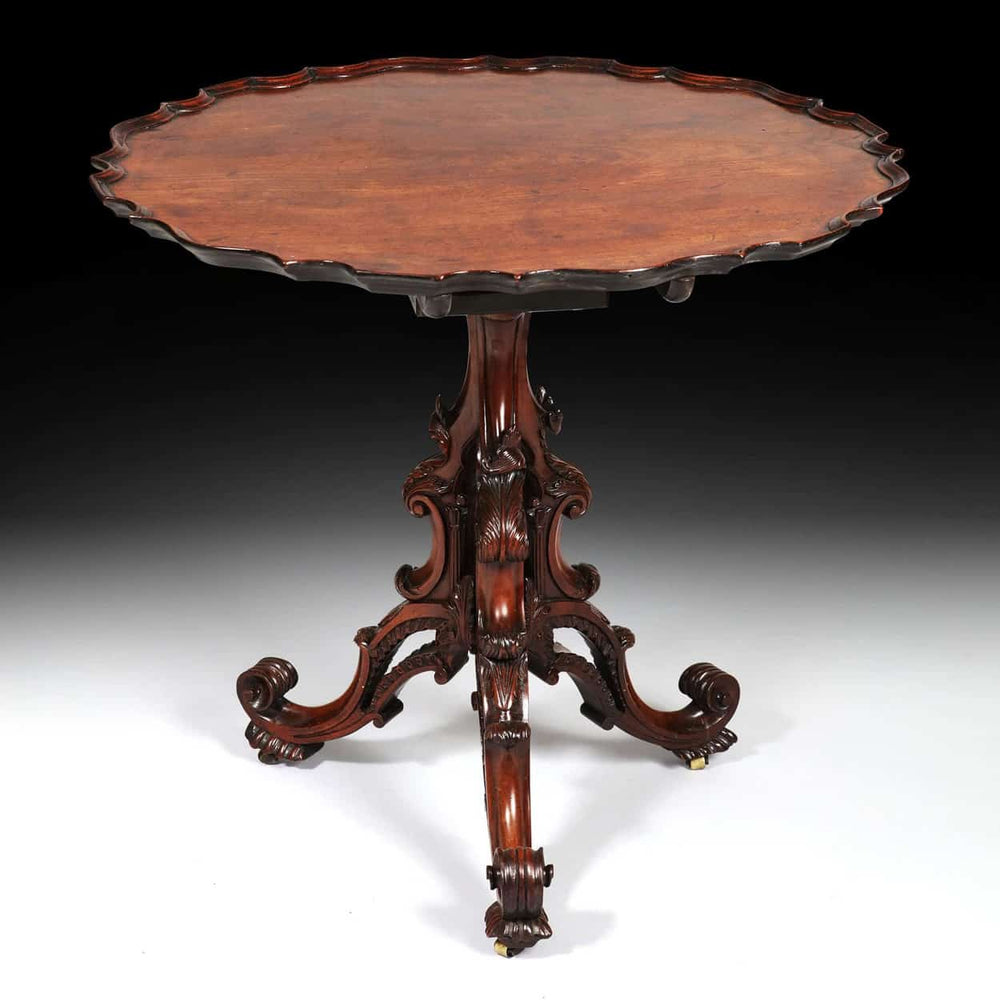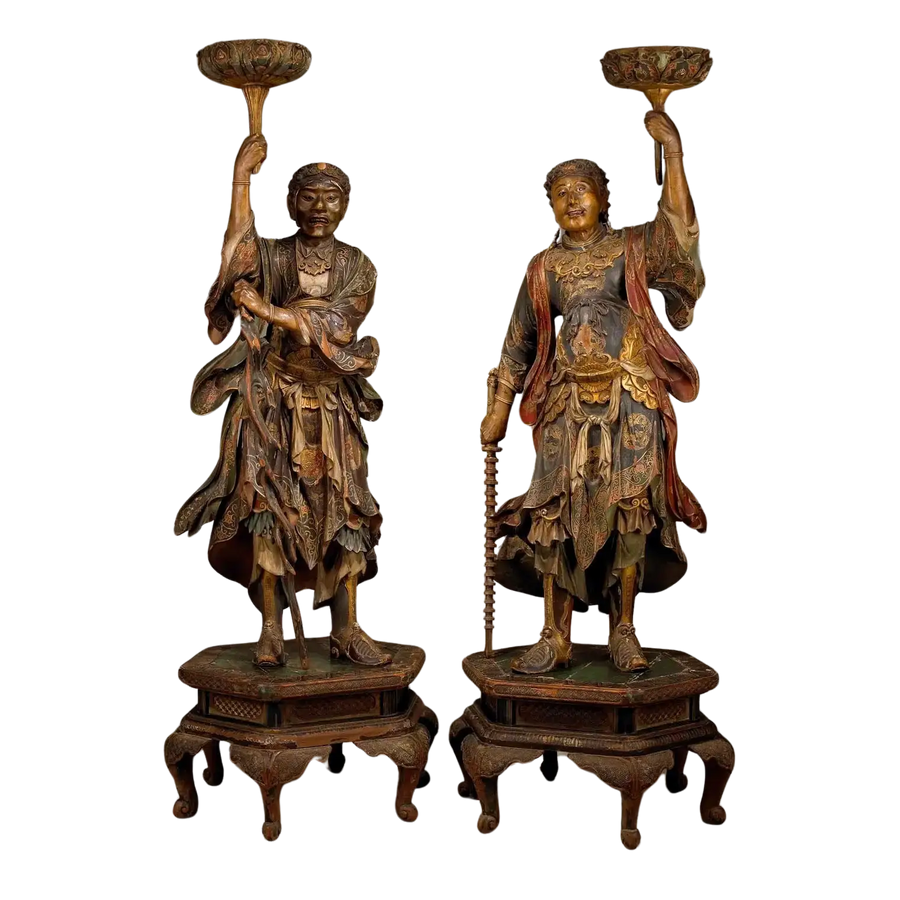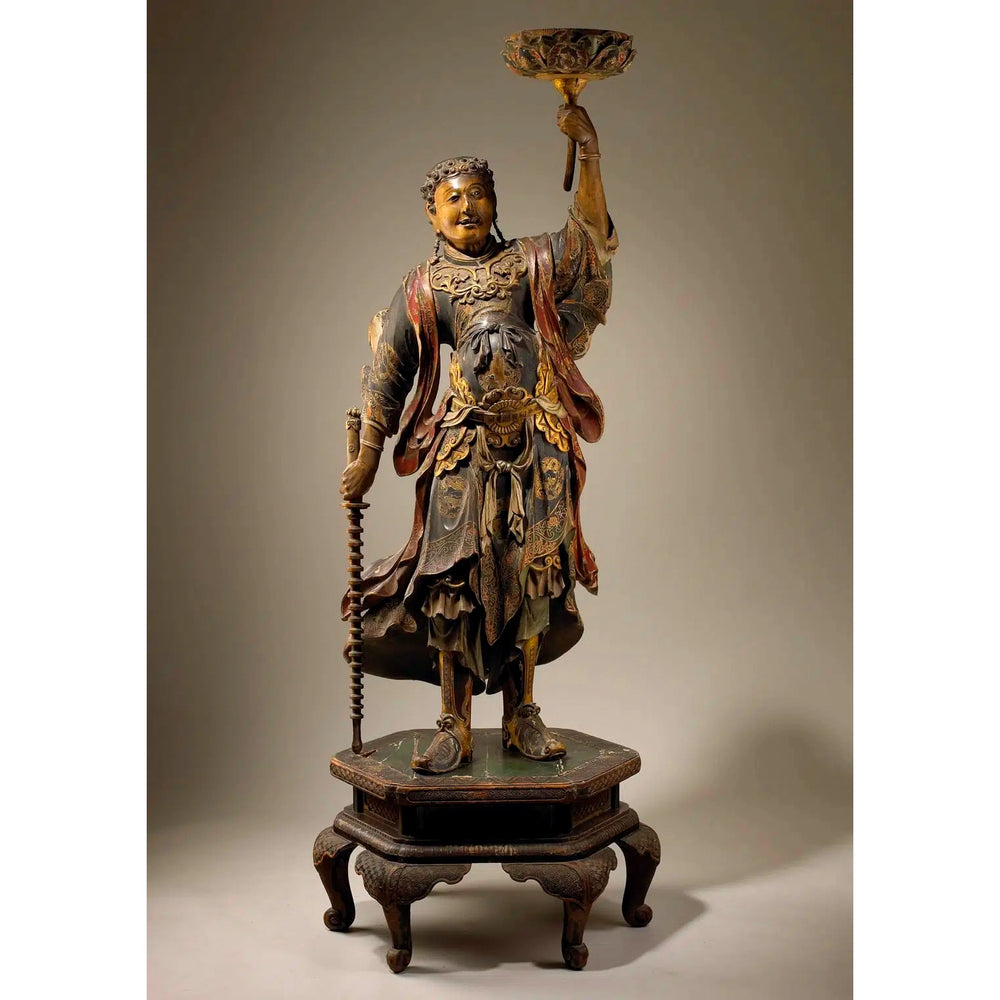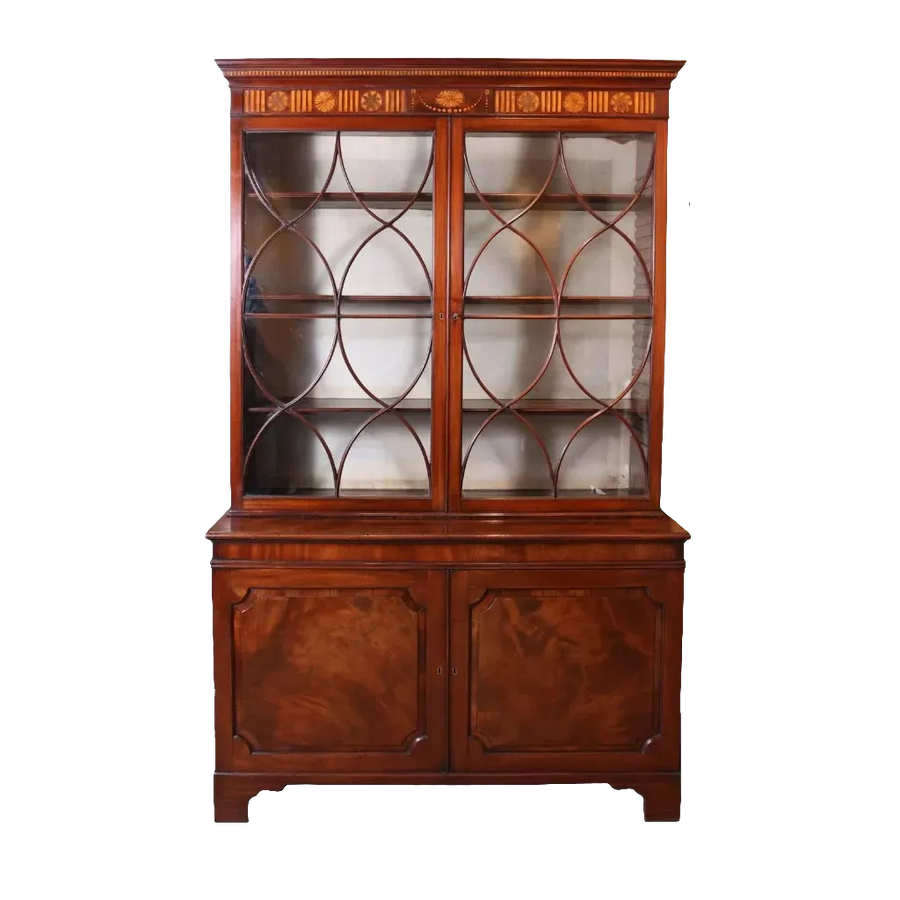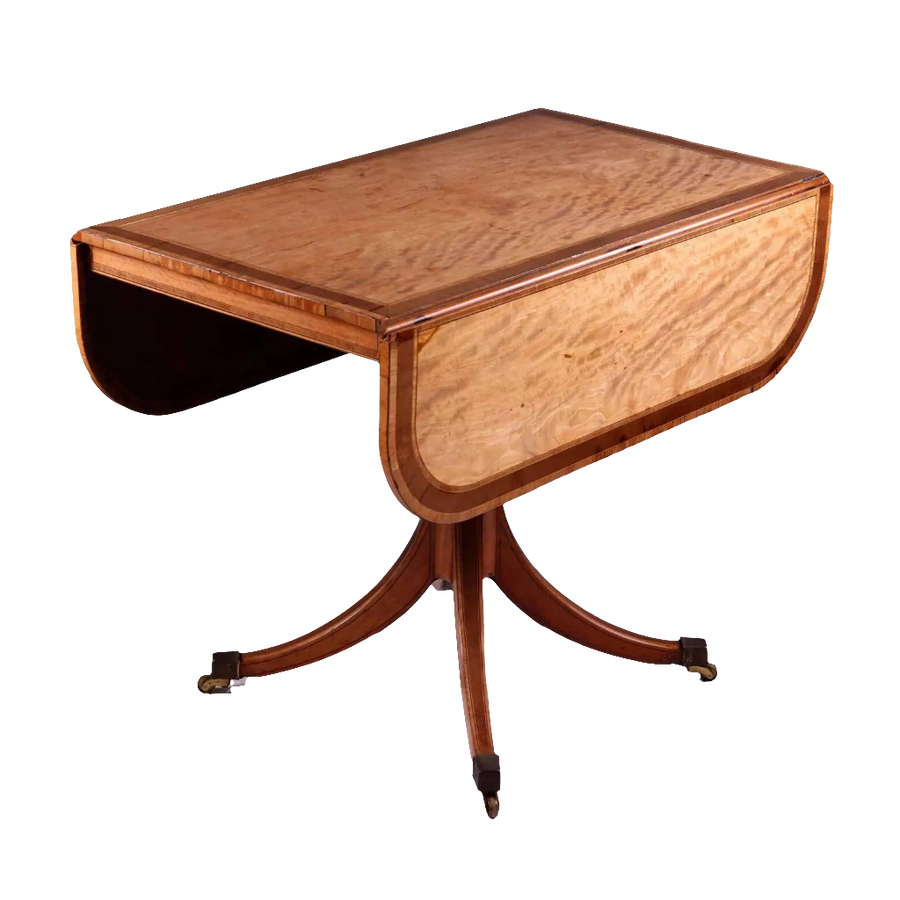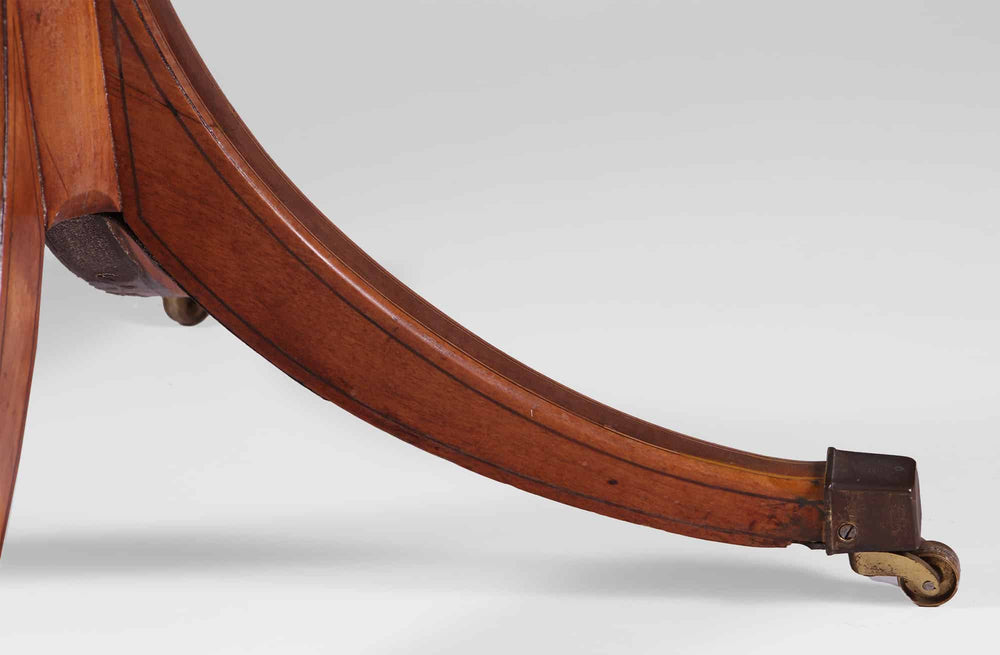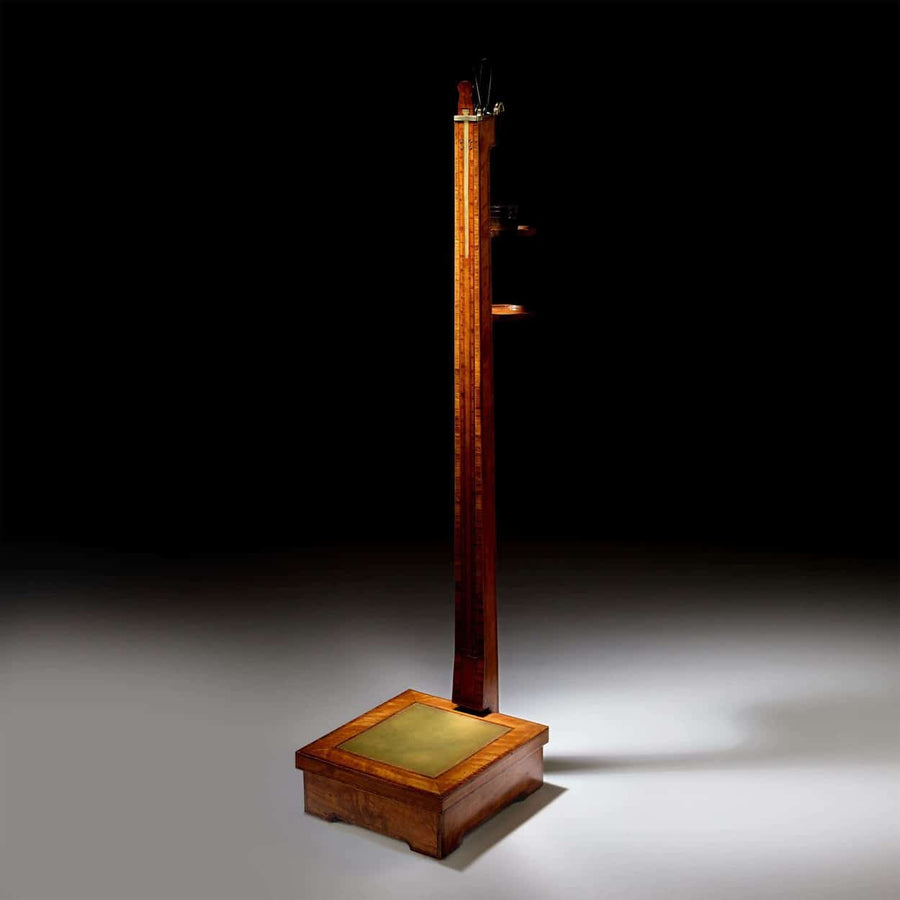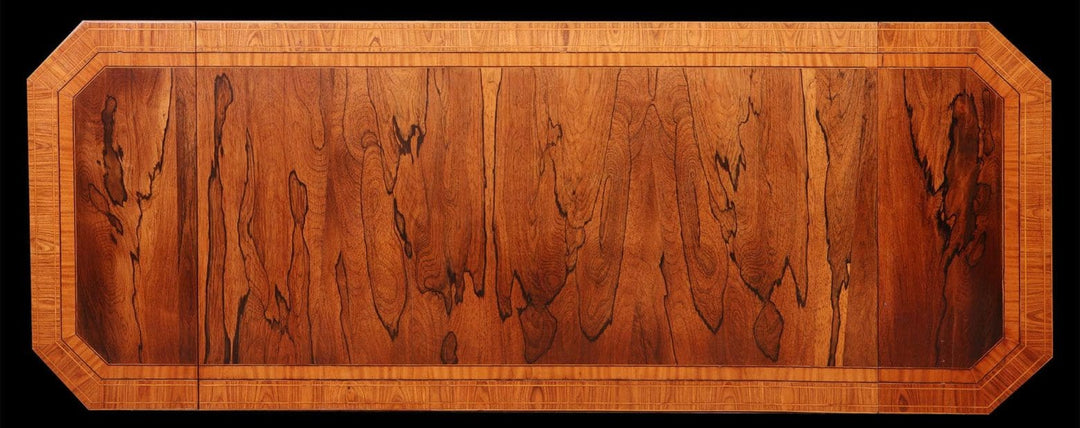
Boxwood is one of the finest and most versatile of the traditional cabinet timbers, admired for its pale golden colour, silky texture, and exceptional density. Native to Europe and widely grown in England, boxwood (Buxus sempervirens) has long been valued for its smooth, close grain, which allows it to be carved and turned with great precision. In antique furniture, boxwood was rarely used for entire pieces, but rather as an accent timber — in stringing, inlay, crossbanding, and turned details — where its clarity and strength made it indispensable.
Origins and Qualities
Boxwood is a small, slow-growing tree, which meant that it was never available in wide boards suitable for large-scale furniture. Instead, its tight grain and uniform colouring made it ideal for fine detail. It was frequently used for instrument-making, tool handles, and small decorative objects, but in furniture, its most common application was in delicate inlays and bandings that contrasted beautifully with darker timbers such as mahogany, rosewood, or satinwood.
Decorative Uses
In the 18th century, boxwood became a staple material for the refined neoclassical style. Cabinetmakers used thin strips of boxwood for stringing and crossbanding, setting out geometric patterns and classical motifs with great precision. Boxwood was also dyed green to create coloured inlays, particularly in Sheraton-style furniture, adding a subtle richness to decorative schemes. Its use in fine marquetry allowed craftsmen to achieve crisp, intricate details that other timbers could not provide.
Makers and Styles
George Hepplewhite and Thomas Sheraton both illustrated furniture incorporating boxwood stringing and inlay in their design books of the late 18th century, making the timber synonymous with the elegant lines of the neoclassical style. Gillows of Lancaster and London also used boxwood for fine inlay and decorative detailing, often combining it with satinwood, sycamore, and tulipwood. Beyond English cabinetmaking, French ébénistes also embraced boxwood for marquetry and contrasting effects.
Legacy
Although rarely the star material of a piece, boxwood was essential to the decorative vocabulary of late 18th- and early 19th-century furniture. Its clarity, durability, and ability to take a fine polish ensured it was the perfect timber for subtle yet precise detailing. Today, antique furniture featuring boxwood stringing, crossbanding, or inlay is admired for the elegance and refinement it represents, capturing the delicate artistry of the Georgian and Regency periods.





